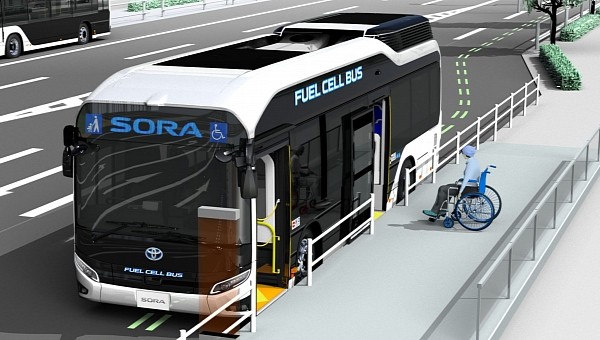The Italian city of Bologna is overhauling its public transport system. But instead of choosing hybrids or battery-electric buses, the administration chose fuel-cell (FCEV) units. Here’s when you’ll be able to travel in one while vacationing in this beautiful European country.
Bologna made a big step forward in lowering its carbon footprint. Over 120 hydrogen-powered buses will replace the diesel-powered ones currently in use. It’s one of the biggest deals involving FCEVs, and it might signal that the future isn’t based solely on the battery-electric (BEV) solution.
Back in February, Bologna’s elected officials asked the Italian Ministry of Infrastructure to finance its acquisition of 127 fuel-cell electric buses. The plans have been approved, the money was sent, and now the city can move on with its project to change how people move inside the urban area. European Union funds have also been used for this project.
The agreement signed by Bologna’s local authorities, the city’s public transport company, and other relevant parties is now official, according to Italy 24. It also includes building the necessary infrastructure to fill up the buses.
The first 34 buses are expected to be in use by 2024, while the other units must arrive by June 2026.
Bologna currently has old diesel-powered buses roaming its streets alongside newer means of transport that still pollute. The city wants to achieve climate neutrality by 2030. To make sure it meets its goals, the administration is bent on making public transport better.
Filling up fuel-cell buses takes less than charging them via a DC stall. They’re also silent while in operation, are more efficient than their internal combustion engine counterparts, and do not require too much maintenance. Since these are projections made by manufacturers, Bologna's interest in being at the forefront will give other cities the necessary data to make similar investments.
The EU contributed around €90 ($94.8) million to this public infrastructure overhauling project.
Fuel-cell buses aren't extraordinarily new. They have been seen in various European Cities since 2009. A good example is the Mercedes-Benz Citaro FuelCELL Hybrid.
Finally, Bologna won’t use only hydrogen-powered buses. It also has Turkish-made Karsan battery-electric buses currently in its fleet and intends to keep its collection of trolleybuses – the well-known electric buses that rely on overhead cables to run.
Back in February, Bologna’s elected officials asked the Italian Ministry of Infrastructure to finance its acquisition of 127 fuel-cell electric buses. The plans have been approved, the money was sent, and now the city can move on with its project to change how people move inside the urban area. European Union funds have also been used for this project.
The agreement signed by Bologna’s local authorities, the city’s public transport company, and other relevant parties is now official, according to Italy 24. It also includes building the necessary infrastructure to fill up the buses.
The first 34 buses are expected to be in use by 2024, while the other units must arrive by June 2026.
Bologna currently has old diesel-powered buses roaming its streets alongside newer means of transport that still pollute. The city wants to achieve climate neutrality by 2030. To make sure it meets its goals, the administration is bent on making public transport better.
Filling up fuel-cell buses takes less than charging them via a DC stall. They’re also silent while in operation, are more efficient than their internal combustion engine counterparts, and do not require too much maintenance. Since these are projections made by manufacturers, Bologna's interest in being at the forefront will give other cities the necessary data to make similar investments.
The EU contributed around €90 ($94.8) million to this public infrastructure overhauling project.
Fuel-cell buses aren't extraordinarily new. They have been seen in various European Cities since 2009. A good example is the Mercedes-Benz Citaro FuelCELL Hybrid.
Finally, Bologna won’t use only hydrogen-powered buses. It also has Turkish-made Karsan battery-electric buses currently in its fleet and intends to keep its collection of trolleybuses – the well-known electric buses that rely on overhead cables to run.







